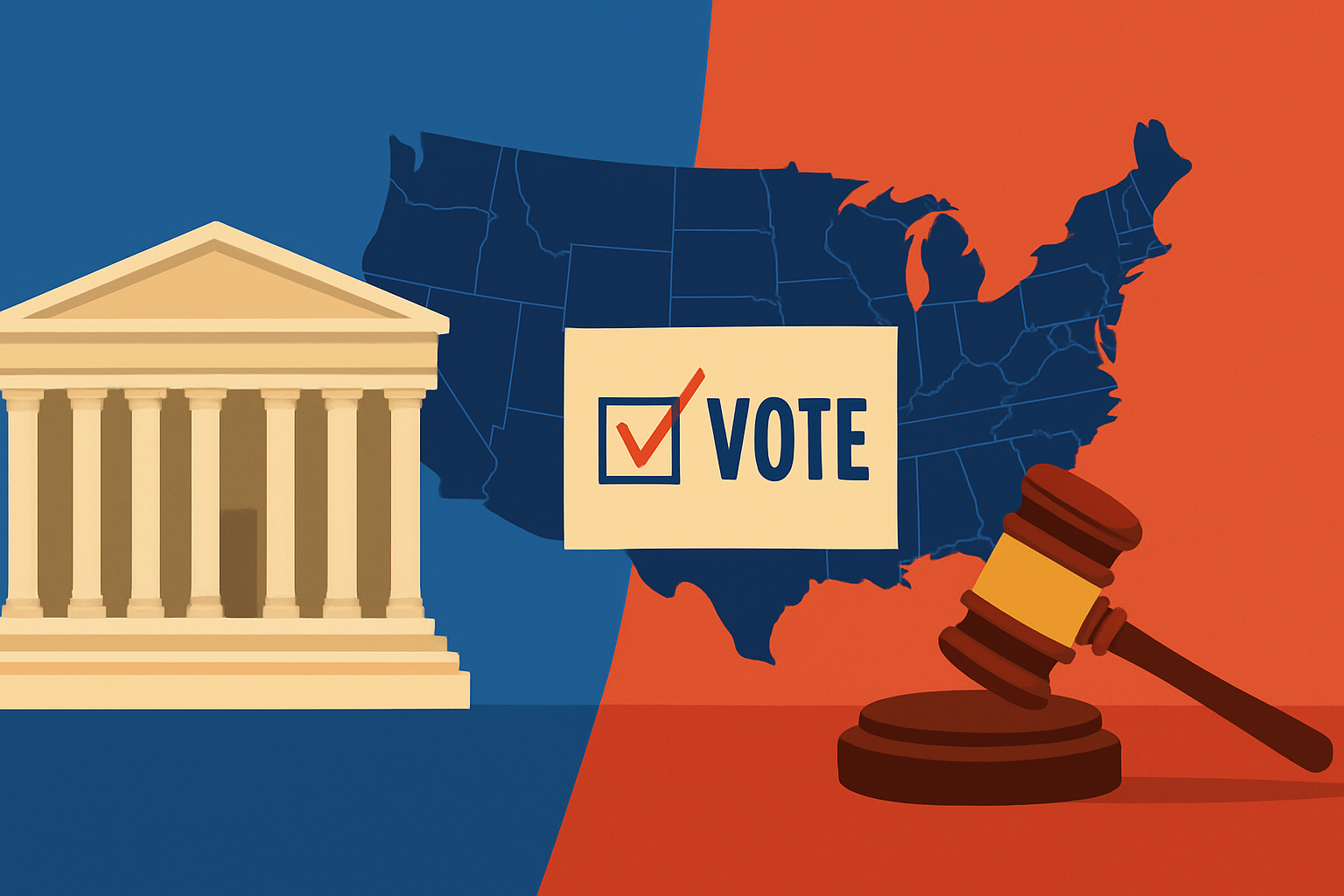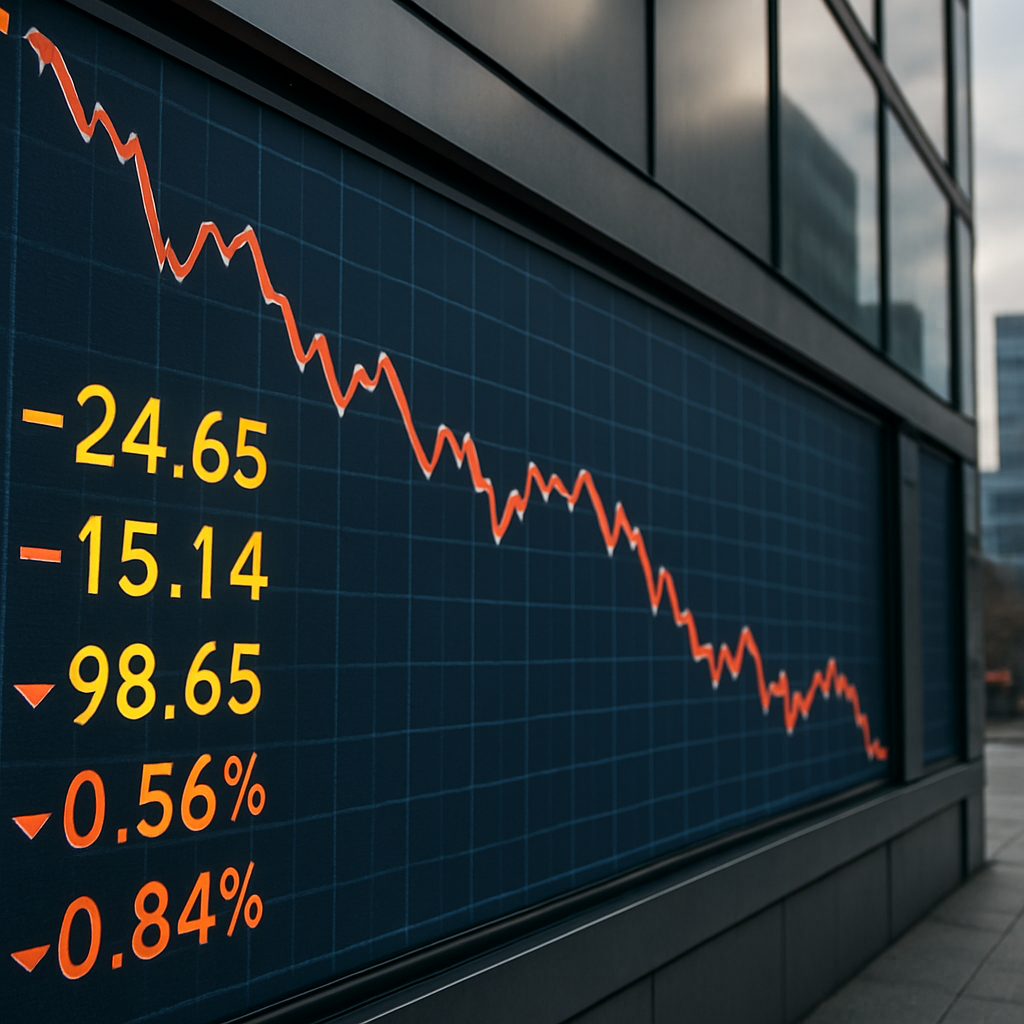The Supreme Court’s Next Move Could Redraw Not Just Districts — But Market Expectations
In a season of political uncertainty already shadowed by a federal government shutdown, the U.S. Supreme Court’s decision to take up Louisiana v. Callais has set Washington — and Wall Street — on alert. At stake is Section 2 of the Voting Rights Act, a key provision that prohibits racial discrimination in voting. Depending on how the Court rules, the verdict could reshape congressional maps across Southern states and alter the balance of power in the House of Representatives ahead of 2026.
For investors, this is more than a constitutional question — it’s a potential macroeconomic pivot point, one that could influence fiscal spending priorities, tax direction, and regulatory policies across key sectors.
Political Realignment Meets Market Sentiment
The Court’s decision to revisit the boundaries of Section 2 comes at a time when investors are already grappling with policy volatility. According to The Guardian and Bloomberg, a prolonged government shutdown is beginning to strain federal programs and delay funding disbursements, amplifying uncertainty in sectors like defense, infrastructure, and healthcare — all highly sensitive to congressional budgets.
If the ruling results in a political shift — particularly in states like Louisiana, Alabama, and Georgia — it could redefine fiscal priorities in Washington. Analysts at Morningstar note that “a shift in congressional control often precedes significant changes in spending patterns, particularly around clean energy incentives, corporate tax frameworks, and healthcare subsidies.”
Markets historically dislike surprises in fiscal direction. Any perceived instability could prompt short-term risk aversion and capital rotation into defensives such as utilities, consumer staples, and dividend-rich blue chips.
Why This Matters for Investors
- Fiscal Policy Direction:
A ruling that changes congressional representation could alter tax and spending policy. Historically, party realignments have shifted capital allocation priorities — for example, the 2010 redistricting cycle coincided with the rise of austerity politics and reduced stimulus-driven growth. - Regulatory and Sector Exposure:
Expect policy-sensitive sectors — energy, healthcare, defense, and infrastructure — to react first. Investors may also see volatility in municipal bonds and state-funded projects if federal funding priorities are disrupted. - Market Volatility and Defensive Rotation:
Political fragmentation tends to reduce policy predictability. This environment often benefits low-beta sectors and policy-resilient companies with strong balance sheets and recurring revenue.
Broader Implications: From Ballots to Balance Sheets
Beyond immediate politics, the case underscores a larger structural issue: the intersection of governance and capital markets. According to Brookings Institution research, political polarization has measurably increased the risk premium investors assign to U.S. assets since 2016, reflecting a loss of long-term policy clarity.
A ruling that weakens Section 2 could trigger new legal and political challenges across multiple states, extending uncertainty into the 2026 election cycle. For investors, this translates into an elongated period of legislative paralysis — where headline risk, rather than economic fundamentals, drives short-term sentiment.
Even as Wall Street digests this, the ongoing government shutdown adds another layer of unpredictability. Reuters reports that every week of federal closure subtracts an estimated 0.1 percentage point from quarterly GDP, while delaying federal payrolls and procurement contracts. If congressional dysfunction deepens, Treasury yields and fiscal outlooks could face further pressure.
Future Trends to Watch
- Supreme Court Rulings: Legal analysts expect oral arguments in early 2025 and a final decision by midyear — potentially reshaping the electoral and legislative landscape before the next House cycle.
- Shutdown Duration: The longer the impasse lasts, the more likely credit agencies (like Moody’s) are to revisit U.S. fiscal outlooks, impacting bond markets.
- Legislative Gridlock: Watch for delayed budget negotiations and appropriations bills — both leading indicators for infrastructure and defense spending momentum.
Key Investment Insight
Investors should prepare for a politically charged macro environment with heightened volatility. Favor defensive equity sectors, cash-flow-positive companies, and policy-resilient industries (utilities, consumer staples, healthcare). Short-term swings may create selective opportunities in municipal bonds and infrastructure plays, but discipline is key — political headlines could outweigh fundamentals through the first half of 2025.
Stay informed with MoneyNews.Today — where market strategy meets political reality.
Effective Tags (for website use):
#SupremeCourtDecision #VotingRightsAct #LouisianaVCallais #USPolitics #FiscalPolicy #GovernmentShutdown #MarketAnalysis #InvestorInsights #PolicyImpact #MoneyNewsToday





